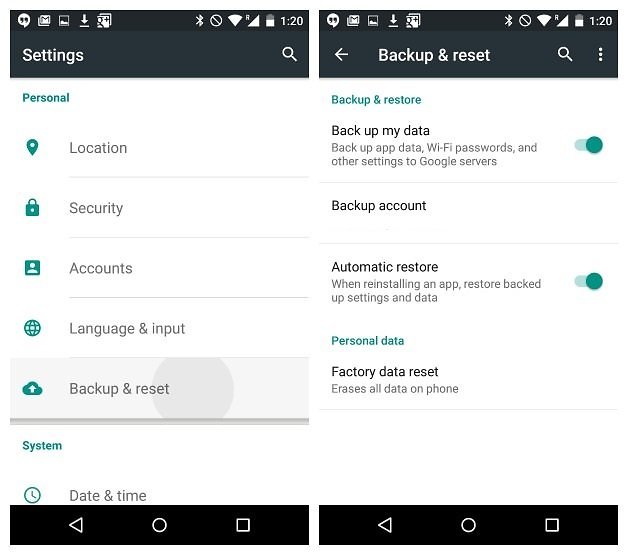
- #ANDROID APP DATA BACKUP TO PC INSTALL#
- #ANDROID APP DATA BACKUP TO PC ANDROID#
- #ANDROID APP DATA BACKUP TO PC DOWNLOAD#
- #ANDROID APP DATA BACKUP TO PC FREE#
The backed up files are located in the “ carbon” folder on the root of the internal storage. The following dialog box displays when the backup is complete. However, note that Helium did not include our SD card as an option, even though there is one present in the Samsung device we used for this example.Ī dialog box displays showing the progress of the backup process.

#ANDROID APP DATA BACKUP TO PC FREE#
Remember the free version of Helium allows you to backup to internal storage or an SD card, if your device has an SD card slot. For this example, tap “ Internal Storage“. To select where the backup will be stored, tap an option on the “ Select Backup Destination” dialog box. Click “ Backup” to move to the next step in the backup process. Tiny thumbnails for all the apps you chose to backup are displayed in the “ X apps selected for backup” section, the “ X” indicating the number of apps chosen to back up. If you only want to back up certain apps, check the box to the right of each app you want to back up. This expands the bottom section of the app. NOTE: If you don’t see the “ App Data Only (smaller backups)” option or the “ Select All” button, tap the icon with the four blue squares outlined in red on the image below. For this example, we’re going to back up the app data for all our apps, so we check the “ App Data Only (smaller backups)” box and then click “ Select All“. You can select which apps you want to back up (see the next step) or you can select all your apps.
#ANDROID APP DATA BACKUP TO PC DOWNLOAD#
When restoring from an “ App Data Only” backup, you will be prompted to download each respective app from the Google Play store before restoring. Backing up only the app data results in a smaller backup, so if you’re strapped for space on your device, check the “ App Data Only (smaller backups)” box. You can either back up all your apps and their app data, or just the app data. Once the Helium app is fully enabled on your device, you’ll see the main screen where you can select options and then select the apps you want to back up. Tap “ OK“, connect your device to your computer, and run the Helium desktop app. If you try to run Helium without having connected your device to the Helium desktop app first, you’ll see the following dialog box.

#ANDROID APP DATA BACKUP TO PC ANDROID#
To backup app data on your Android device, open the Helium app on your Android device by tapping the “ Helium” icon either on your Home screen or in the App drawer. Backing Up App Data On Your Android Device Also, make sure that USB debugging is enabled, in case you turned it off. NOTE: If you turn off your Android device, you will have to open the Helium desktop app on your computer and connect your Android device again when you turn your device back on. You can disconnect your device from the computer at this point. Then in June, Microsoft made it easier to access files from your Android phone through WSA.You should see a message on the Helium app window that Helium has been enabled on your Android.

Back in May, WSA picked up new multitasking features, setting a cap on the RAM allocated to Android apps and introducing Android App Link support.
#ANDROID APP DATA BACKUP TO PC INSTALL#
Meanwhile, the interoperability of Android and Windows continues to improve as Microsoft works on its Windows Subsystem for Android (WSA) initiative, which allows you to install and run Android apps on your PC. The system essentially converts the recent apps cards into screenshots that are analyzed for text in much the same way as Microsoft's Snipping Tool now does, allowing you to select and copy words as if they were typed text.

In the case of the latter, you can open the recent apps view on Google's Pixel phones and select other devices to select text from any app or image. The accuracy of OCR technology has increased by leaps and bounds in recent years, with implementations like Google Lens and Android's multitasking interface marking notable advancements of late.


 0 kommentar(er)
0 kommentar(er)
